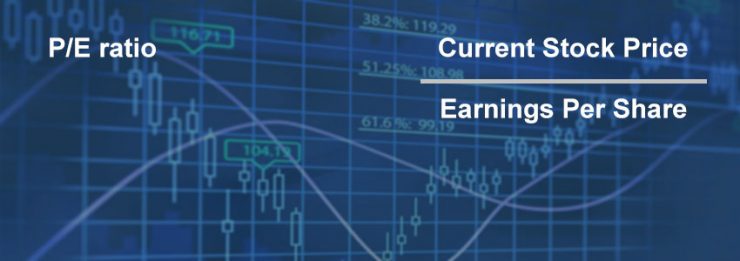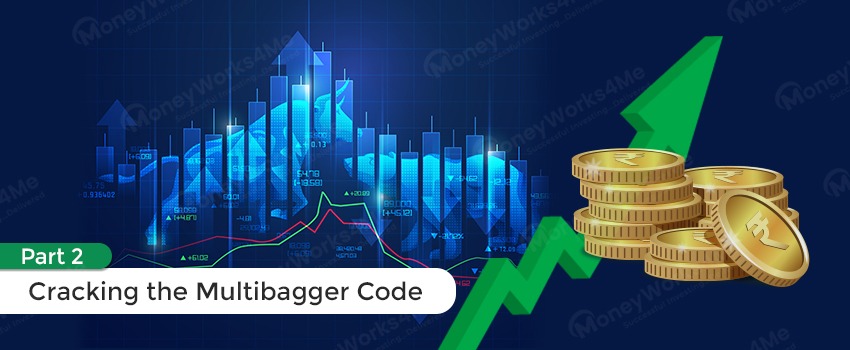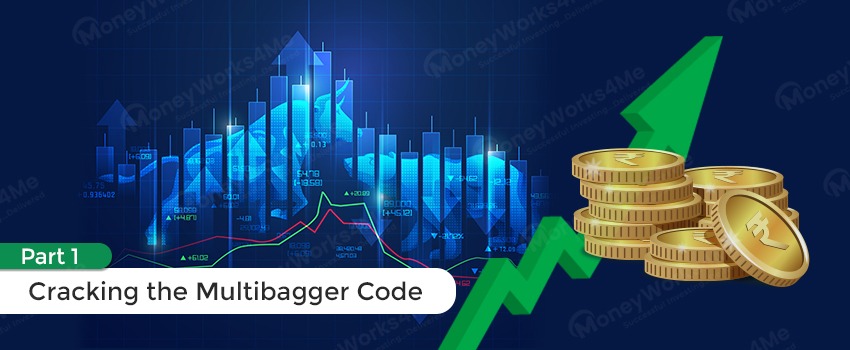When it comes to valuing stocks, the P/E ratio is one of the most frequently used multiple. Although a simple indicator to calculate, the P/E ratio is actually quite difficult to interpret. It can be extremely informative in some situations, while at other times it is next to meaningless. As a result, investors often misinterpret this term and place more value on it than is warranted.
This article covers the following:
So, let’s understand the P/E ratio. Find out how it can be used in stock analysis. And also learn how it should not be used.
What is P/E?
A price to earnings or P/E ratio is used to evaluate how expensive or cheap, the stock market/stock may be at any given time. Just as an appraiser can give you an estimate of the value of your home, the P/E ratio is a tool that can be used to estimate the fair value of the stock market.
As the name implies, to calculate the P/E, you simply take the current stock price of a company and divide it by its earnings per share (EPS).
There are two most popular ways to calculate the P/E.
- Most of the time, the P/E is calculated using EPS from the last four quarters. This is known as the trailing P/E. However, this method gives a less accurate reflection of the company’s growth potential.
- The P/E is also calculated using EPS for the next four quarters. This is known as the forward/leading P/E. Though this method will better reflect the growth potential, its dependency on the expected earnings leaves room for a lot of error.
Trailing P/E is based on actual earnings and, therefore, is more accurate. However, stock prices are constantly moving while earnings remain fixed.
As a result, forward P/E can sometimes be more relevant to investors when evaluating a company.
Why P/E Ratio is important?
The P/E ratio indirectly incorporates key fundamentals of the company such as future growth and risk. Generally, it takes into account the following factors:
Past Performance: If the company has a proven track record, it would have a higher P/E relative to a company that has had erratic performance.
Future Growth: This is the most important factor built into the P/E ratio. High growth companies (sales and earnings) will have higher P/E than the low growth companies within the same industry.
Risk (Leverage): P/E ratio is highly dependent on capital structure. Leverage (i.e. debt taken on by the company) affects both earnings and share price in a variety of ways, including the leveraging of earnings growth rates, tax effects, and impacts on the risk of bankruptcy, and can sometimes dramatically affect the company’s results. Thus, the lower the leverage, the higher the P/E ratio. As a result, the high capital intensive industry gets lower P/E than the low capital intensive industry.
Corporate Governance: A company with strong corporate governance will have a higher P/E than its peer group. For example, Infosys has historically commanded higher P/E than its peer group because it has strong corporate governance.
Dividend Pay-out: Generally, high and stable dividend-paying companies get high P/E because it shows the fundamental strength of the company and the company’s commitment to rewarding its shareholders.
Economic Cycle: Industries that are affected by the economic cycle usually trade at lower P/E’s than defensive sectors (those which are unaffected by the economic cycle). For example, FMCG and Pharma sectors have higher P/E than the Textile and Capital Goods sectors.
Using P/E multiple to value a company?
The first step for P/E analysis is to find similar companies that operate in the same field as the company you are trying to value. Though you can never find a perfect match, you can narrow down your search using parameters like the same sector, geography, product & services, size, etc.
Once you find comparable companies, the next step is to adjust the corporate earnings across the peer group. Earnings is an accounting figure that includes non-cash items and non-recurring income.
It can also be manipulated by management. Therefore, the need to closely look at corporate earnings and adjust it if necessary. Let’s look at a few such adjustments:
- The first check you need to run is whether the comparable companies are using the same accounting methods such as inventory, revenue, and depreciation methods as used by the subject company. If yes, then go ahead and do your analysis, otherwise, you will have to make some adjustments to make it comparable.
- You should also exclude non-recurring items from the earning calculations such as discontinued operations, extraordinary items (e.g. one-off windfall gains and write-downs), and accounting changes.
After adjusting earnings, the next step is to compare these fundamental factors across the peer groups. You then finally arrive at a P/E of each of these companies.
Once you have calculated P/E ratios for individual companies, you can now calculate the industry P/E by taking the average or median of these individual companies’ P/E.
The final step is to compare the company’s P/E with the industry average;
If a company has a P/E higher than the industry average, this means that the market is expecting big things over the next few months. Your job is to fundamentally compare the company with its competitors.
If the company outperforms in most of these parameters especially future sales and EPS growth, it justifies the higher valuation/high P/E of the company. If the peer group comparison doesn’t justify the high P/E, then the stock might be overpriced.
On the contrary, if a company has a P/E lower than the industry average, it does not necessarily mean that a company is undervalued. Rather, it could mean that the market believes the company is headed for trouble in the near future.
If a company’s stock price has fallen significantly and traded at a very low P/E, do your research and discover the reasons. Is management transparent? Are they creating value for the shareholders? Is the Board of Directors selling stock in the company? Is there weakness across the entire sector, industry, or economy, or is it caused by firm-specific bad news? Is the company going into a permanent state of decline?
So, is the stock cheap, dear, or fairly priced? That’s something you’ll have to decide yourself by doing some analysis.
P/E Ratio: Key points to remember:
A company with a high P/E ratio will have to live up to the market expectation by substantially increasing its earnings, or the stock price will drop. Therefore, if the stock is trading at a higher P/E than the industry average, you must be very cautious before investing in the stock.
- Different industries have different P/E ratio ranges that are considered “normal”. For example, technology companies may sell at an average P/E ratio of 18-20, while textile manufacturers may only trade at an average P/E ratio of 8-10. Always compare within the industry or peer group companies. For example, Hero MotoCorp and Bajaj Auto operate in the two-wheeler segment, thus are comparable companies. But Hero Motocorp and Maruti Suzuki are not comparable as they operate in different segments.
- Historically, the P/E ratio of Sensex has been in a range of 12-23. This wide fluctuation is due to significant dependence on economic conditions. The average P/E ratio of the Sensex is about 16-18. You can compare the current P/E of the stock market with its average P/E. However, even if the market seems fairly valued at a P/E ratio of 12, bad times could cause the market to continue on a downward spiral with the P/E ratio going much lower. On the other hand, during booming economies, a P/E ratio of 23 may not necessarily mean the market is overpriced.
- P/E is highly dependent on corporate earnings, thus should be used where the earnings are positive, relatively stable, and predictable in the future. Companies with losses will have a negative P/E ratio, thus rendering the interpretation meaningless. Retail sector companies such as Shoppers Stop and Pantaloon Retail cannot be compared on the basis of the P/E ratio because they don’t have stable or positive earnings.
To conclude, the P/E ratio prima facie looks like a simple, easy, and effective method. However, sometimes you may face difficulty in finding publically traded comparable companies. Also, adjusting the earnings to make it comparable across peer groups can prove to be quite a task.
It requires a detailed analysis of the financial statements and business models of comparable companies. But, if done right it can provide valuable inputs for taking the right investment decisions.
If you liked what you read and would like to put it into practice Register at MoneyWorks4me.com. You will get amazing FREE features that will enable you to invest in Stocks and Mutual Funds the right way.
Related Article: Is Nifty’s P/E ratio a reliable indicator today?
How to Make Informed Stock Investing Decisions:
Best Stocks From:
Nifty 50 Nifty Next 50 Nifty 100 Nifty 200 Nifty 500 Healthcare Auto FMCG Nifty Financial Services Chemicals & Fertilizers Dividend Opportunities SmallCap 250 MidCap 100
Need help on Investing? And more….Puchho Befikar
Why MoneyWorks4me | Call: 020 6725 8333 | WhatsApp: 8055769463












